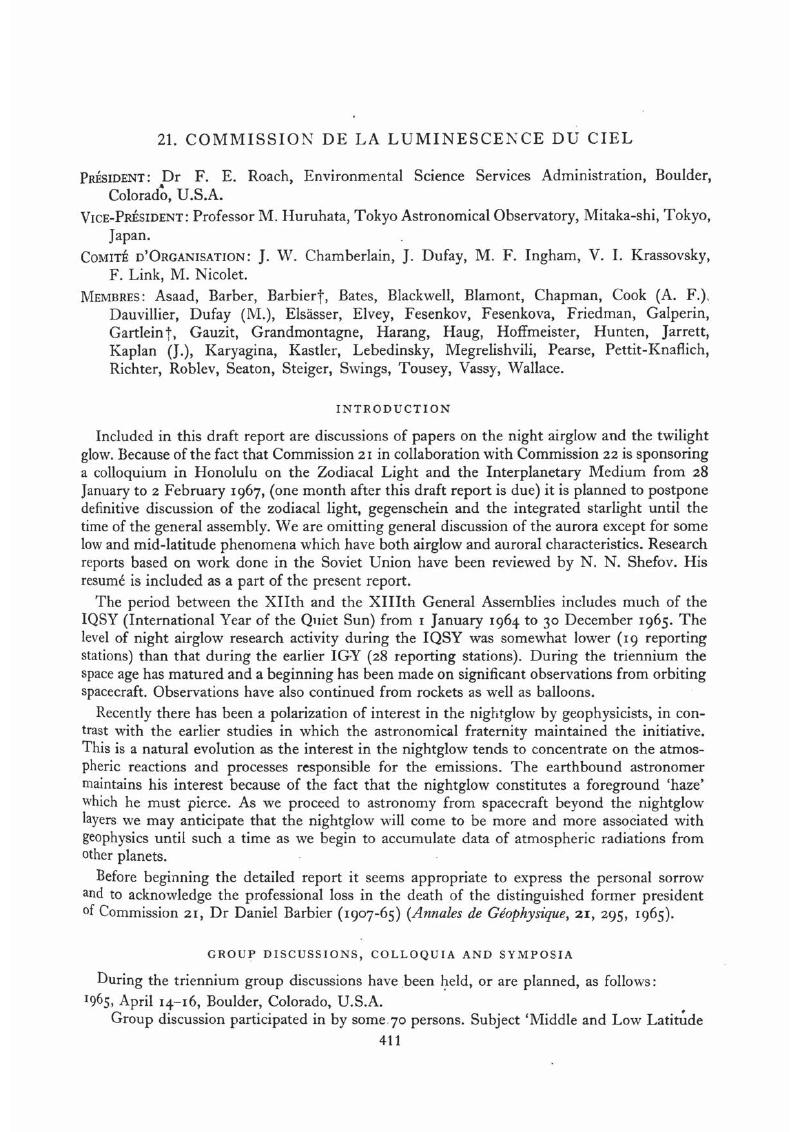No CrossRef data available.
Published online by Cambridge University Press: 25 April 2016

A. Airglow, General
 emission in twilight, Planet. Space Sci., 14, 1303.Google Scholar
emission in twilight, Planet. Space Sci., 14, 1303.Google Scholar radiation, Planet. Space Sci., 13, 1008.Google Scholar
radiation, Planet. Space Sci., 13, 1008.Google Scholar ions in the nocturnal upper atmosphere at middle latitudes, Planet.
Space Sci..
14, 709.Google Scholar
ions in the nocturnal upper atmosphere at middle latitudes, Planet.
Space Sci..
14, 709.Google ScholarSbornik in the references is for ‘Aurorae and Airglow', series ‘Results of IGY\ Publishing House NAUKA of the U.S.S.R. Academy of Sciences. Letters refer to general bibliography, above, pages 415 to 422.